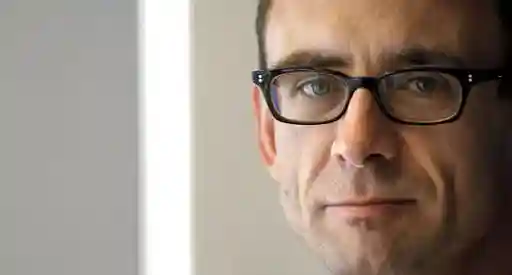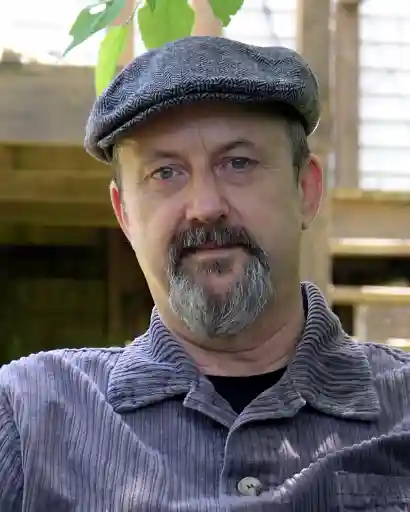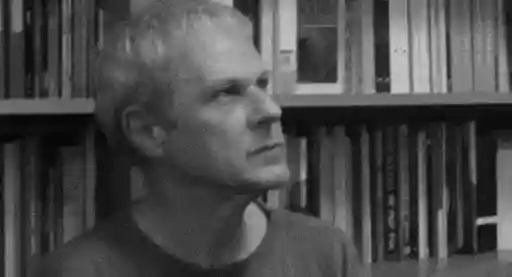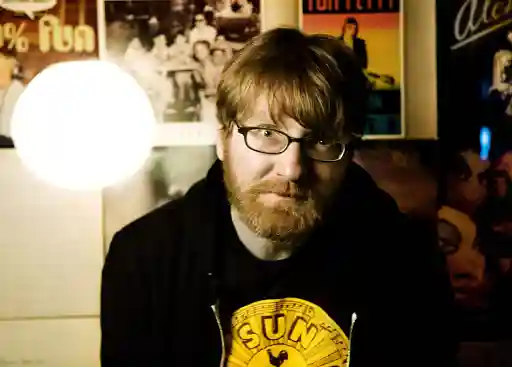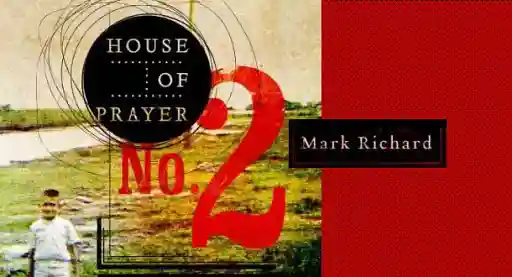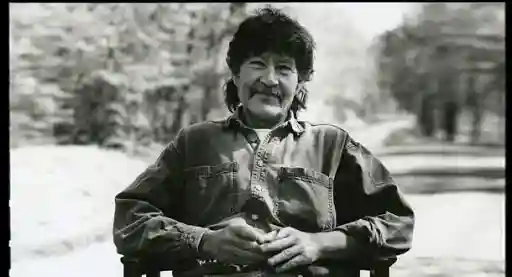Alex Segura’s books pulse like neon signs, illuminating the dark, however briefly. They feel at once forsaken and vibrant, a modern spin on classic noir. Never mind that the protagonist of his series, private investigator Pete Fernandez, sometimes seems hellbent on killing himself, whether by chasing serial killers or chasing his ninth drink with a tenth. But the Pete we find in Miami Midnight—the latest and last installment—has his wits about him. As a sober, serious, and perhaps a little bored small business owner, he doesn’t expect to be pulled into a cold case involving his mother, but Pete’s past always catches up with him.
Segura’s previous novel Blackout was recently nominated for an Anthony Award. He has also written numerous comic books including The Archies and co-created as well as co-written the Lethal Lit podcast, which was one of The New York Times’ “Five Great Podcasts of 2018.” Segura and I talked about what it feels like to end a series, why we root for flawed characters, and how crime fiction can “shed a light on the world as it is, not an idealized version, but how we see it.”
You’ve taken Pete on quite a journey since Silent City. What have you learned about the character—or about yourself—after writing five books with him?
I’ve learned that I like spending time in the gray areas—with people who are not one or the other, good or bad. Pete is very much a good guy, but he’s flawed, makes mistakes and sometimes fails. That’s more interesting to me as a writer, and I think, to the reader, than a steel-jawed hero on his umpteenth case. I also learned that I’d accomplished what I set out to do, which was gratifying and a little sad, because it’s hard to say goodbye to things we love. But when I first started Silent City, I really just wanted to tell a private detective’s origin story—albeit a Cuban-American PI who was from Miami. I just didn’t think it’d take five books, but I’m glad it did. I feel like, without spoiling too much, by the end of Miami Midnight, Pete has become what he set out to be—for better or worse, and we tie up a lot of important threads dating back to the beginning of the series, while hopefully opening some new doors. Just in case.
I’ve also learned that while Pete and I are similar—we both grew up in the same place, went to the same schools, had similar upbringings—we are not the same person. Our paths deviated at some point, so it’s been fun to learn about him and explore how he’s developed. I’ve really enjoyed pushing him forward, and seeing him become this new man—because when we meet him in Silent City, he’s in bad, bad shape. Things sometimes got worse for him, but he’s made strides, and that has been rewarding to see, because it wasn’t always planned. Sometimes he just did stuff and I found myself chasing him around with a pen and pad, which is a sign that, as a writer, you’re doing it right.
What sort of gray areas were you exploring with this book?
Looking back on it, I think I was exploring the grays of addiction. For every victory—or person who is sober, successfully fighting their demons, like Pete—there are losses, like Javier Mujica, and to a lesser degree, Pete’s friend Dave Mendoza. There’s a big revelation, toward the middle of the book, that really recalibrates Pete’s entire view on his life, and how he’s lived it, and it’s really just showing him that he’s not alone—and has never been alone in this struggle. If anything, it gives him an unexpected sense of gratitude, because not everyone survives addiction—and to have the chance to not only live, but thrive, is something that he hopefully learns to not take for granted.
I also just love the idea of putting these flawed, broken people together—and watching them try to survive. It sounds crazy, but I find it so much more interested to write and read about someone like Pete, who takes one step back for every two steps forward, than someone plainly heroic, like a Superman type. But even then, knowing Pete can be a screw-up, I also wanted to show that he’s gotten better at this detective game, that he’s learned from his mistakes and, maybe, just maybe, he might be learning how to do it.
Throughout this series, Miami has played a key role. You’ve shown us sides to the city not normally accessible to outsiders. But this book has Miami in the title, implying that it’s more important than ever. How do you see the location functioning in this story?
I see it more as a punctuation than anything else—the entire series, even when Pete is elsewhere, like he is for portions of this book, has featured Miami in a starring role. It all comes back to Miami, and for the finale, it felt perfect to not only have it in the title, but to hint at it being an ending of sorts. I tried to approach the book in two ways—first, as I usually do, which is to not only present Pete with a mystery to solve, but explore him, and how he develops, and how it ties into his own—and his own family’s—past. The challenge for me has always been to maintain the series, to give longtime readers something to cling to, while still making each book accessible to newcomers, too. I treat each book as a standalone that happens to star a recurring character, so I don’t get precious about spoilers or revealing what’s happened before if it can further the narrative of the novel. But I had the added pressure, in this instance, of having to cap off the whole run. While some threads could be left dangling—I am reserving the right to come back!—I knew there’s an expectation that this book would conclude what had come before.
But, to answer your question—yes, this book gets deeper into the fabric of the city, hopping around many corners—from the swamplands to the run-down parts of the city—to show the scope of Miami. The diversity. The reality some people are facing. I think it’s part of the power of crime fiction—having this ability to shed a light on the world as it is, not an idealized version, but how we see it, and I try to do that with Miami, to show my hometown not as some kind of tourist oasis, but a metropolis with equal parts beauty and scars. I really wanted to give the book—and the setting—a sense of life, a feeling that there was something bubbling beneath the surface, and a big part of that is by taking the reader into the city beyond just the idea people have about Miami. I think you have to see the darkness to truly understand paradise, if that makes sense.
Music and art intersect in surprising way in Miami Midnight. Did you set out intentionally to explore these worlds?
It just kind of happened, but once the pieces started to crop up, it felt right. I’d been listening to a lot of jazz, and I wanted to explore music but not necessarily through a rock band or something more modern. There are so many tragic stories in jazz, musicians felled by drug addiction, personal problems, you name it—and I loved the idea of this romantic figure that you never meet kind of haunting the entire story, and tying into a bigger mystery that Pete has to solve. The art aspect first started out as a means to an end—Alvaro Mujica, the gangster that hires Pete at the beginning of the book, claims he wants a painting back. It’s a ruse of sorts, but that sent me down my own rabbit hole, and it added an unexpected layer of texture and weight to the whole book, so by the time I got to the end of the novel, it made sense to have the climax happen at Miami’s Art Basel, the city’s biggest art event of the year. I feel that both worlds—art and jazz—are steeped in noir in their own ways, and I really set out to tell a more stylized, noirish story with this book, because the core case Pete has to solve—it’s kind of hopeless, and even when there is closure, it’s a sad, resigned kind, so I wanted to add elements that would carry that plaintive, defeated-but-not-dead sentiment.
What does it feel like to conclude this series? Is there anything that you would change?
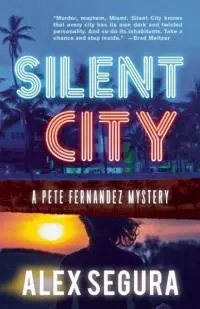 Bittersweet, but it’s the right time. Like I said, I’d set out to tell the story of how Pete came to be a detective, and by the end of Miami Midnight, we know that. I can imagine dozens of stories following this novel, but it’s time for a break—I need to let them breathe and move on. I’ll hopefully get to catch up with him at some point.
Bittersweet, but it’s the right time. Like I said, I’d set out to tell the story of how Pete came to be a detective, and by the end of Miami Midnight, we know that. I can imagine dozens of stories following this novel, but it’s time for a break—I need to let them breathe and move on. I’ll hopefully get to catch up with him at some point.
People often ask me how much of the series I’d mapped out, and the answer is none! I didn’t think it’d be a series until I was mostly done with Silent City, and I’d become so enamored with the dynamic between Pete and Kathy that I wanted to write another book. By then, I had a rough idea for a serial killer story, and the two blended together. But even then, I wasn’t sure. I feel like I’ve considered killing Pete with every book—not because I don’t like him, but because I treat each book as if it could be the last in what eventually became a series. Even with Blackout, I was contractually locked into one more, and I had a rough idea for what would become Miami Midnight, but it ended in such a way that you could probably end things there, too. I think the series benefitted from that—from this sense that anything could happen, that nothing was really precious, and I think that was done, initially, to keep me interested in the story I was telling. I knew I had bigger things I wanted to do with the series—thematic ideas, like exploring the Cuba/Miami dynamic, doing something on cults, in the case of Miami Midnight, bringing closure to the series and setting Pete and Kathy up for the future—but I also kept things loose enough that I could feed each book with whatever I was obsessing over in the moment, which I think gives each book a unique personality, and the series as a whole a more vibrant, of-the-moment feel.
Will you miss Pete and Kathy?
I will miss them, but I’m happy there’s one more story to tell—even if it’s set in the past!—in the form of the novella we’re working on, which is set in New York, in the days before Blackout, starring Pete and your PI, Kat Stone. But I will miss them, for sure. I keep saying this is the end, and it may very well be, but I’d be crazy if I didn’t at least visit to check in on them. What kind of a father would that make me?
There is, appropriately, grieving in this book. Kathy says, “It all felt so sudden, so intense […] losses that added up to an overwhelming sense of vertigo and confusion, at the worst possible time.” This taps into one of my favorite aspects of crime fiction—the stakes are always high and clear. How do you see Pete and Kathy growing in this book or in the series more broadly?
There’s a fun parallel at the end of Miami Midnight that I think evokes the opening scenes of Silent City in a subtle and hopefully meaningful way, and it’s done to show the reader, at least the ones who’ve been around since the beginning, how far they’ve come. Pete was passed out drunk when we met him—on the verge of losing his job, no friends, no relationships, nothing. Kathy was literally kidnapped! But in terms of her personal life, she was also adrift, unhappy and struggling to find purchase in the world. And, without spoiling too much, Miami Midnight places them firmly elsewhere—they’re more confident, they’re more aware of themselves and they’re ready for what’s next. And that’s been a long time coming, not just something that happens in this book. I find their relationship—writing their dynamic and chronicling how they connect—to be the most rewarding part of the series, because it feels very real to me, very genuine—just two people who love each other and who’ve been through hell and who’ve decided that no matter what, they’ll be next to each other in some form. Whether that means romance or friendship or partnership—that’s in the book. But the journey has been a blast to create.
You’ve been writing essays lately as well as fiction and comics. How do you move between these worlds?
Oh, I don’t know! I just do whatever’s in front of me, to be honest. Each one feeds another part of the brain, and it serves as a bit of a palate cleanser. Comics feel much more puzzle-like, and collaborative, while prose is all in my head for better or worse—so when I do one and shift to the other, it feels like I’ve started a new game, which is nice and energizing. I used to have all this time to just sit back and pontificate about things, but now it’s all about doing. With two young kids, a demanding job and a million distractions, I just try and seize whatever little pockets of time I have to write, and that often just means diving into the next thing on my list. I wish I could romanticize it more!
What’s next for you?
I’ve got two comic projects that will hopefully launch this year that I’m very excited about and I’m well into writing my first standalone, which has been very exciting and terrifying. So, it should be another busy year!
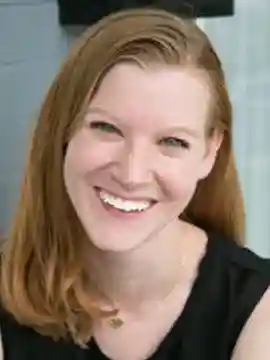
About the author
Erica Wright's new novel Famous in Cedarville (Polis) will be released this fall. Her debut The Red Chameleon (Pegasus) was one of O, The Oprah Magazine's Best Books of Summer 2014. She is also the author of the poetry collections Instructions for Killing the Jackal (Black Lawrence) and All the Bayou Stories End with Drowned (Black Lawrence). She is the poetry editor and a senior editor at Guernica Magazine as well as a former editorial board member for Alice James Books. She grew up in Wartrace, TN and now lives in Washington, DC with her husband and their dog Penny.
